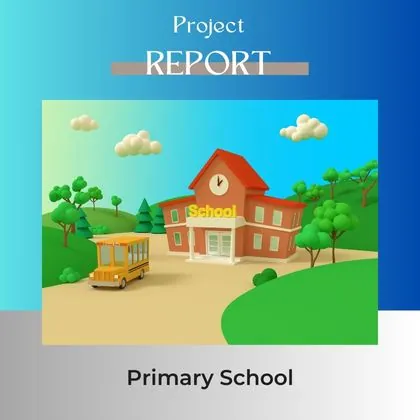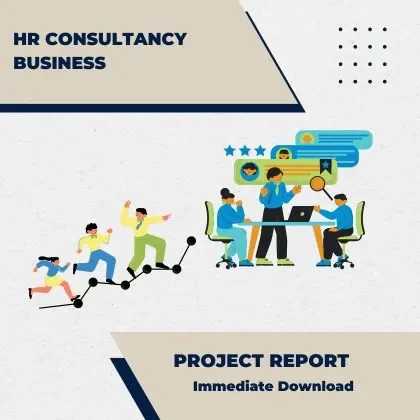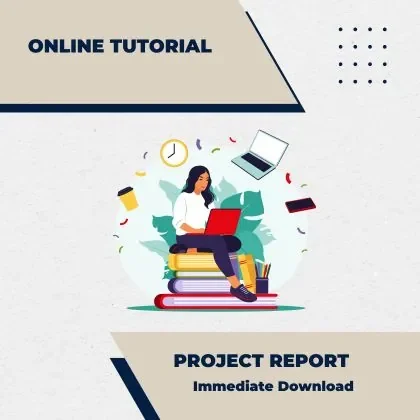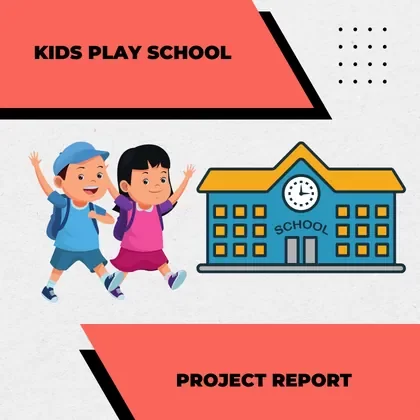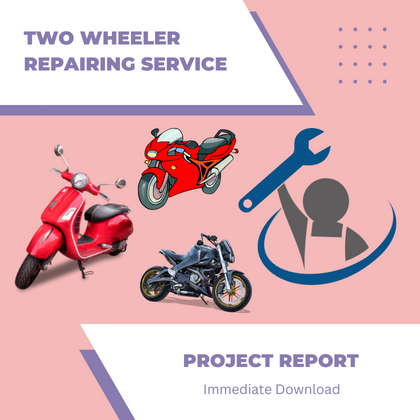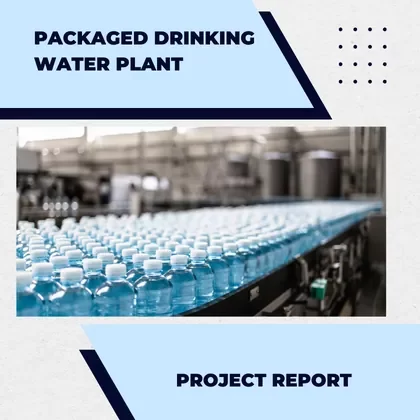Description
Primary School Project Report is available for download on this page. It takes many days to research this business and then write the project report for starting a primary school in India.
If you are an individual who lacks time and wants to get the project report ready in a short moment. You are on the right page. We can provide you with this project report in a few minutes. Just make the payment and get the download link that gives you access to use our project report.
Primary school, often referred to as elementary school in some countries, serves as the foundational stage of a child’s formal education journey. It plays a crucial role in shaping young minds, building essential skills, and establishing a strong academic and social base for future learning. Primary education typically covers the early years of a child’s education, spanning from kindergarten or preschool through to grades one through five or six, depending on the educational system in place.
Primary School Set Up Project Report
Primary schooling is a critical phase in a child’s educational journey, providing them with the foundational knowledge, skills, and values that will serve as building blocks for future learning. It is a time of growth, discovery, and exploration, laying the groundwork for a lifelong love of learning and personal development. Teachers, parents, and the broader community all play vital roles in ensuring the success of primary education, nurturing the potential of the next generation. Kids play school these days is mandatory for all iny tots. You can start this business once you explore all crucial details about it.
One can explore all the important details about this start-up that we have written in our project report. Our experts have made your work easy by writing a primary school set up project report that you will require to avail bank loan for this business and also using it as a map for your new journey.
How To Download Project Report For Primary School Opening In India?
Gone are the days of waiting at the door of the expert, as a result, get your primary school start up sample report in hand, by instantly downloading the report in pdf format.
First Step – Click add to basket >> Check Out >> Payment
Second Step – Immediately after successful payment, you will get a link to download the report. You can download the report immediately from this link.
Key Aspects of Primary School
Academic Curriculum: Primary schools provide a well-rounded curriculum that introduces children to fundamental subjects such as mathematics, language arts, science, and social studies. These subjects are typically taught by a single teacher or a small group of teachers, ensuring a stable and nurturing learning environment.
Basic Skills Development: Primary education focuses on developing foundational skills such as reading, writing, numeracy, and critical thinking. These skills are essential for a child’s ability to understand and engage with the world around them.
Social and Emotional Growth: Primary school is not just about academic learning; it’s also a time for children to develop social and emotional skills. They learn how to interact with peers, resolve conflicts, and develop a sense of empathy and cooperation.
Introduction to Extracurricular Activities: Many primary schools offer extracurricular activities such as art, music, physical education, and clubs. These activities help children explore their interests and talents beyond the classroom. Project report on opening a school in India on CBSE Pattern is important so that you have a foundation that lays down all the protocols you have to follow and work in smooth manner.
Character Building: Primary schools often incorporate character education into their curriculum. They aim to instill values like respect, honesty, responsibility, and kindness in students, promoting good citizenship.
Teacher-Student Relationships: In primary school, teachers often play a significant role as mentors and guides. The close relationship between teachers and students can have a lasting impact on a child’s educational journey.
Assessment and Progress Tracking: Primary schools use various assessment methods, including quizzes, tests, and teacher observations, to gauge students’ progress. This information helps tailor instruction to individual needs.
Transition to Higher Education: Primary schools prepare students for the transition to secondary or middle school, equipping them with the academic and social skills necessary for more advanced learning.
Challenges and Innovations in Primary Education
Diversity and Inclusion: Primary schools are increasingly recognizing the importance of inclusive education, striving to meet the needs of students with diverse abilities and backgrounds. This includes implementing accommodations and support for special needs students.
Technology Integration: In recent years, there has been a growing emphasis on integrating technology into primary education. This includes the use of digital resources, interactive learning platforms, and online tools to enhance the learning experience.
Adapting to Changing Needs: Primary schools must continually adapt their teaching methods and curricula to address evolving societal needs, such as digital literacy, environmental awareness, and global citizenship.
Parental Involvement: Encouraging parental involvement in a child’s education is a key challenge. Schools often work to foster strong partnerships with parents to support students’ learning both at school and at home.
Addressing Achievement Gaps: Primary schools are working to narrow achievement gaps by providing additional support to disadvantaged students, ensuring that every child has an equal opportunity to succeed.
How Much Investment Is Needed To Set Up A Primary School?
The amount of money required to start a primary school can vary widely based on several factors, including location, size, infrastructure, and educational standards. Starting a primary school is a substantial undertaking that involves a range of expenses.:
Facility Costs: Renting, purchasing, or constructing a suitable school building and infrastructure can be a significant expense. Costs depend on factors like location, size, and condition of the facility. Building a new school can cost several million dollars, while renovating an existing facility might be less expensive.
Educational Materials and Equipment: Budget for textbooks, teaching materials, classroom furniture, computers, projectors, whiteboards, and other educational resources. These costs can vary but may range from $10,000 to $100,000 or more.
Staff Salaries: Allocate funds for teachers, administrative staff, support staff, and other employees. Salaries can be a substantial ongoing expense and will depend on the number of staff members and their qualifications.
Curriculum Development: Developing a curriculum that aligns with educational standards may involve expenses for curriculum design and professional development for teachers. This can range from a few thousand to tens of thousands of dollars. You can further develop your school with fashion design school by adding a special course for interested students.
Licenses and Accreditation: Fees associated with obtaining the necessary licenses, permits, and accreditation can vary depending on your location and educational standards. Costs can range from a few thousand dollars to more significant amounts.
Administrative Costs: Budget for office space, computers, administrative software, and other tools needed to manage school operations. Initial administrative costs may range from $10,000 to $50,000 or more.
Marketing and Promotion: Funds for marketing efforts, including creating a website, advertising, and promotional materials. Initial marketing budgets can range from a few thousand to tens of thousands of dollars.
Safety and Security: Costs associated with implementing security measures, safety protocols, and emergency response systems. These costs can vary based on the complexity of security measures needed.
Utilities and Maintenance: Budget for ongoing expenses like electricity, water, heating/cooling, maintenance, and repairs. These costs can vary depending on the size and condition of the facility.
Student Services: Allocate funds for services such as transportation (if provided), cafeteria services, extracurricular activities, and health services.
Insurance: Expenses for liability insurance, property insurance, and other coverage to protect the school and its assets.
Legal and Regulatory Compliance: Budget for legal fees associated with compliance with education laws, contracts, and regulations.
Contingency Funds: It’s advisable to have a contingency fund to cover unexpected expenses or emergencies. The amount will depend on your risk assessment.
How Much Space Is Needed To Start A Primary School In India?
The space required to open a primary school can vary depending on factors such as the number of students, grade levels, facilities, and the specific educational approach. Here’s a rough estimate to give you an idea:
Small Primary School: A small primary school catering to a limited number of students, such as a preschool or daycare, may require around 1,000 to 5,000 square yards of space. This would include classrooms, a play area, administrative offices, and other essential facilities.
Medium-Sized Primary School: A medium-sized primary school with several classes and a larger student body might need anywhere from 5,000 to 15,000 square yards of space. This would accommodate multiple classrooms, a library, a cafeteria, playgrounds, administrative offices, and perhaps some sports facilities.
Large Primary School: A larger primary school serving a significant number of students may require 15,000 to 30,000 square yards or more. This would include numerous classrooms, specialized rooms for science labs or computer labs, a gymnasium, outdoor sports fields, libraries, administrative buildings, and larger play areas.
How To Open Primary School In India?
Starting a primary school is a complex and regulated process that requires careful planning, resources, and adherence to educational standards and regulations. Here are the key steps and things you will need to start a primary school business:
Educational Background and Expertise:
You should have a strong educational background and experience in the field of primary education. Understanding educational methodologies, curriculum development, and child development is crucial.
Business Plan:
Create a comprehensive business plan outlining your school’s mission, vision, and educational philosophy. Include details about your target market, curriculum, facilities, and financial projections.
Legal Structure and Registration:
Decide on the legal structure of your school (e.g., sole proprietorship, partnership, LLC, non-profit) and register it according to the laws and regulations in your area.
Location and Facilities:
Secure an appropriate location for your school. This may involve purchasing or leasing a building with classrooms, administrative offices, restrooms, and outdoor play areas. Ensure the facilities meet safety and accessibility standards.
Curriculum Development:
Develop a curriculum that aligns with educational standards and guidelines in your region. Consider hiring experienced educators to assist with curriculum design.
Qualified Staff:
Hire qualified teachers and staff members who meet the educational and certification requirements set by your local education authorities.
Licenses and Permits:
Obtain the necessary licenses and permits to operate a school. Compliance with local, state, and national education regulations is essential.
Safety and Security:
Implement safety and security measures to protect students and staff. This may include security systems, emergency protocols, and background checks for staff.
Educational Materials and Supplies:
Purchase or develop educational materials, textbooks, teaching aids, and classroom supplies required for effective teaching.
Furniture and Equipment:
Acquire furniture such as desks, chairs, tables, and storage units. Equip classrooms with technology, including computers, projectors, and audiovisual equipment.
Enrollment and Admissions:
Develop an admissions process, including enrollment forms, application fees, and admission criteria. Advertise your school to attract students and parents.
Finances and Budget:
Create a detailed budget that covers operating expenses, staff salaries, facility maintenance, and other costs. Secure funding through investments, loans, grants, or tuition fees.
Financial Management System:
Set up a financial management system to handle tuition payments, payroll, taxes, and other financial transactions.
Insurance:
Obtain insurance coverage for your school, including liability insurance and property insurance to protect against potential risks and accidents.
Curriculum Materials and Resources:
Purchase textbooks, educational software, teaching materials, and resources needed to deliver your curriculum effectively.
Marketing and Promotion:
Develop a marketing strategy to promote your school in the local community. Consider online and offline advertising, social media, open houses, and community outreach.
Parental Involvement and Communication:
Establish effective communication channels with parents, including newsletters, parent-teacher meetings, and a school website.
Quality Assurance and Evaluation:
Implement quality assurance measures and regularly evaluate your school’s performance to maintain and improve educational standards.
Compliance and Accreditation:
Work towards meeting any accreditation or certification requirements relevant to your location. Accreditation can enhance the credibility of your school.
Continuous Improvement:
Continuously seek opportunities for improvement in your school’s programs, facilities, and operations.
Remember that starting a primary school is a significant undertaking that requires careful planning, dedication, and compliance with educational regulations. Consulting with educational experts and legal professionals familiar with education laws in your area can be invaluable in the process.
Staff Requirement For A Primary School In India
Running a primary school requires a diverse team of staff members to ensure the smooth operation of the school and the well-being of students. The exact number and types of staff may vary depending on the size of the school, its specific needs, and local regulations. Here’s a general overview of the types of staff commonly found in primary schools:
Principal/Headteacher: The school leader responsible for overall management, administration, and educational leadership.
Teachers: These professionals are responsible for delivering the curriculum, teaching students, and assessing their progress. Primary schools typically have multiple teachers, each specializing in different subjects or grade levels.
Teacher Assistants/Aides: Teacher assistants provide support to classroom teachers, helping with various tasks, including classroom management and student supervision.
Counselor: A school counselor provides emotional and academic support to students, helping them with personal and social issues, academic planning, and career guidance.
Librarian: Responsible for managing the school library, promoting reading, and assisting students and teachers with research and resource materials.
Administrative Staff: Administrative personnel handle various administrative tasks, including school registration, record-keeping, and communication with parents and external agencies.
Special Education Teachers: These educators work with students who have special needs or learning disabilities, providing tailored instruction and support.
Support Staff: This category includes various roles such as janitors, maintenance workers, and kitchen staff responsible for maintaining the school facilities, cleanliness, and providing meals.
School Nurse: Responsible for students’ health and well-being, including providing first aid, managing health records, and conducting health education programs.
Security Personnel: School security personnel ensure the safety of students, staff, and the school premises.
Specialists: Some primary schools employ specialists such as music teachers, art teachers, physical education instructors, and foreign language teachers to provide a well-rounded education.
IT Staff: With the increasing use of technology in education, some schools have IT specialists responsible for maintaining computer labs, networks, and assisting with technology integration in the curriculum.
Bus Drivers/Transportation Staff: If the school provides transportation services, bus drivers and transportation staff are essential for student safety during transportation to and from school.
Parent Volunteers: While not staff members in the traditional sense, parent volunteers often play a vital role in school activities, events, and fundraising efforts.
Licenses Needed To Start Primary School In India
Starting a primary school typically involves several steps, including obtaining the necessary certifications and permissions. The specific requirements can vary depending on your location and the educational system in place. Below are some common types of certifications and permissions you may need to start a primary school:
Educational Qualifications:
In many countries, you may need to have a minimum educational qualification, such as a bachelor’s degree in education or a related field, to start a primary school.
Business Registration:
You’ll likely need to register your school as a legal entity, such as a sole proprietorship, partnership, or a non-profit organization, depending on your jurisdiction.
Curriculum Approval:
You may need to develop and submit your primary school curriculum for approval to the relevant education authorities or ministry of education.
Building and Safety Certifications:
Ensure that the school building meets safety and health standards. You may need to obtain building permits and safety certifications from local authorities.
Land Zoning and Land Use Permissions:
Check if the location where you plan to establish the school is zoned for educational purposes. You may need to obtain specific land use permissions or zoning changes.
Teacher Qualifications:
Ensure that your teaching staff meets the required qualifications and certifications mandated by your local education authority. They may need teaching licenses or credentials.
Health and Sanitation Certificates:
Obtain health and sanitation certificates to ensure that the school premises meet hygiene and safety standards.
Business Licenses and Permits:
Depending on your jurisdiction, you may need various business licenses and permits, such as a business license, tax ID, and fire department permits.
Non-profit Status (if applicable):
If you plan to run a non-profit school, you may need to apply for non-profit status and comply with regulations related to non-profit organizations.
Local Regulations:
Comply with all local and national regulations related to education, child protection, and safety.
Inspection and Approval:
Expect inspections from relevant educational authorities or agencies to ensure your school meets all required standards.
Financial and Administrative Records:
Maintain proper financial and administrative records, as you may be required to submit periodic reports to the education department or other authorities.
Parental Consent:
Depending on local laws, you may need to obtain parental consent for enrolling children in your school.
Insurance:
Consider liability insurance to protect against potential legal issues or accidents on the school premises.
Table of Content
Following topics have been discussed in the project report.
| Sr. No. | Particulars |
| 1 | Genesis |
| 2 | Project At Glance |
| 3 | Introduction |
| 4 | Scope And Importance |
| 5 | Service Description |
| 6 | Project Components |
| 7 | Required Equipments |
| 8 | Power Requirement |
| 9 | Manpower Requirement |
| 10 | License & Approvals |
| 11 | S.W.O.T. Analysis |
| 12 | Financials |
| 13 | Computation of Revenue |
| 14 | Working Capital Requirement |
| 15 | Projected Profitability Statement |
| 16 | Projected Balance Sheet |
| 17 | Cash Flow Statement |
| 18 | Depreciation |
| 19 | Calculation of D.S.C.R. |
| 20 | Repayment Schedule of Term Loan |
| 21 | Break Even Point Analysis |
| 22 | Financial Indicators |
| 23 | Implementation Schedule |
| 24 | Assumptions |
How To Write A Project Report For Opening A Primary School In India?
It is not a big deal to write the project report but yes, it takes time to write one. You might be busy with all other chores and may not get time to write a project report that can help you get bank loan. Well, we can make your work easy by writing it for you. You just need to make the payment and grab it from us. It will save both your time and energy.
For whom is detailed project report format for Primary school useful?
- CA Chartered Accountants
- Tax Consultants
- Small Business Owners
- Students
- Engineers
- Who wants to self-study
In addition to those who want to prepare project reports themselves.
Sample Project Report project report on Primary school building construction pdf
In our project report format, we cover technology details, its diagrams, flow charts etc. as and when required or deemed fit to include. Also, we can help you prepare in-depth financial calculations which are necessary for the Investor/bank for your project report for primary school opening in India.
You will get the report data from our Project Report in PDF. You can also modify the information according to your need. You will be able to access the data easily according to your requirement.
Frequently Asked Questions On primary school project report india
What are the potential challenges in opening and running a primary school?
Challenges may include securing funding, competition from existing schools, staffing issues, and keeping up with changing educational trends.
How can I foster a positive learning environment in my primary school?
Focus on creating a nurturing and inclusive atmosphere, promote values of respect and diversity, and encourage student engagement and participation.
Do I need to comply with educational regulations and assessments?
Yes, you must adhere to educational regulations and assessments set by your local education authority to maintain the quality of education and accountability.
How do I stay updated with educational trends and standards?
Join educational associations, attend conferences, and network with other educators. Regularly review and adapt your curriculum to align with current best practices.
Is it necessary to offer extracurricular activities at my primary school?
Extracurricular activities can enhance the overall educational experience. Consider offering options like sports, music, arts, and clubs to enrich students' lives.
What financial considerations should I be aware of when opening a primary school?
Budget for operating costs, staff salaries, facility maintenance, and educational materials. Explore funding options such as tuition fees, grants, and partnerships.
How do I market and attract students to my primary school?
Develop a marketing plan that includes creating a website, hosting open houses, participating in community events, and leveraging social media to reach prospective parents.
How can I ensure the safety of students at my school?
Implement safety protocols, hire qualified security personnel, conduct background checks on staff, and maintain secure facilities.
What staffing requirements are there for a primary school?
You'll need teachers, administrative staff, support staff, and possibly specialists such as counselors, nurses, and librarians, depending on the school's size and needs.
What are the considerations for choosing a location for my primary school?
Consider factors like accessibility, safety, proximity to students' homes, and availability of suitable facilities when selecting a location.
How do I develop a curriculum for my primary school?
You can design your curriculum or adopt an existing one that aligns with your educational goals. It should cover core subjects like math, science, language arts, and social studies.
What certifications and permissions are required to open a primary school?
Requirements vary by country and region, but typically, you'll need educational licenses, building permits, curriculum approvals, and health and safety certifications.
What qualifications do I need to start a primary school?
Qualifications vary by location, but generally, you should have a background in education and a strong understanding of educational principles.
What are the key steps to opening a primary school?
Key steps include securing the necessary approvals and certifications, designing a curriculum, hiring qualified staff, setting up facilities, and developing a business plan.
What is a primary school, and what age group does it serve?
A primary school is an educational institution that typically serves students between the ages of 5 and 11 or 6 and 12, depending on the educational system in your region.

